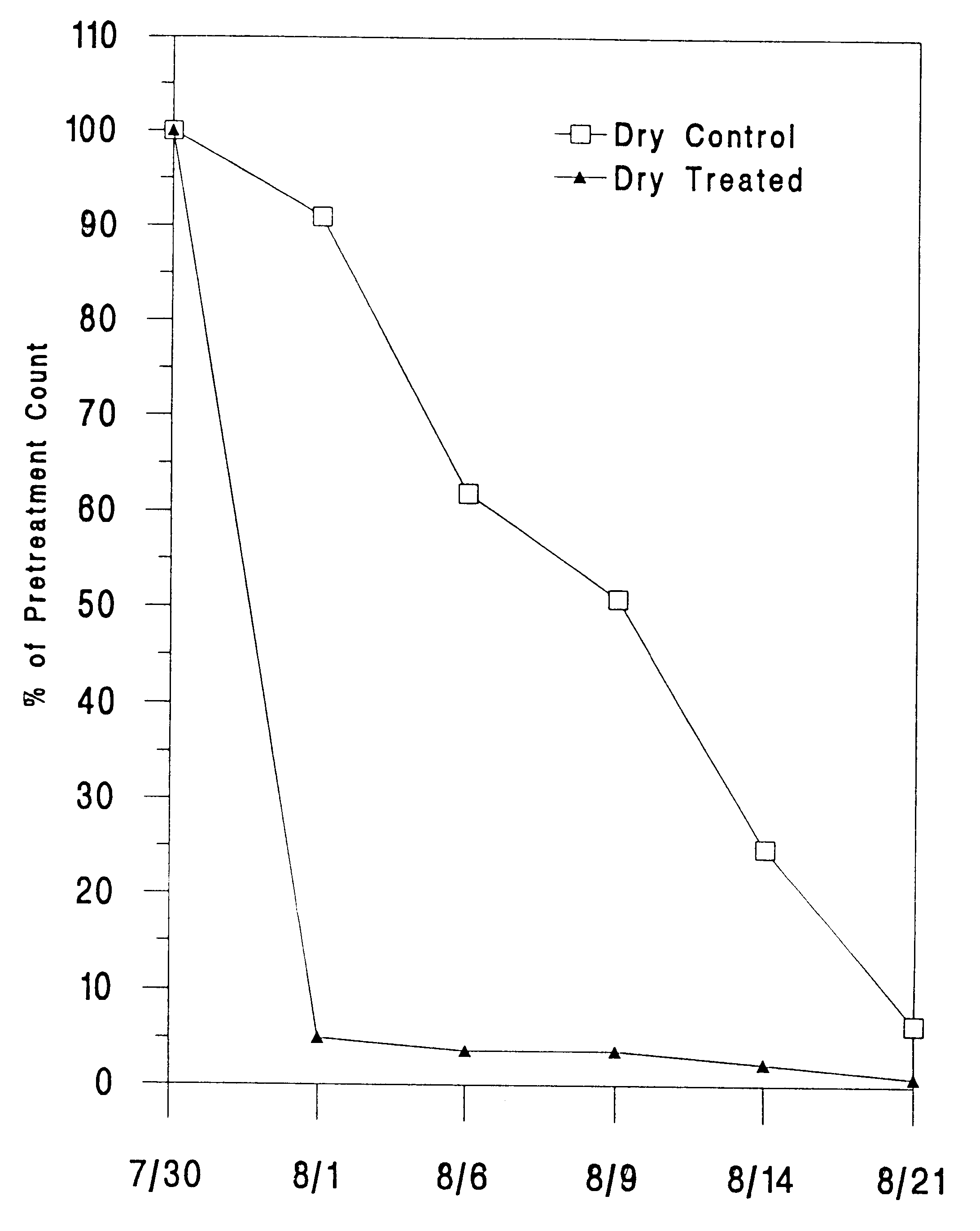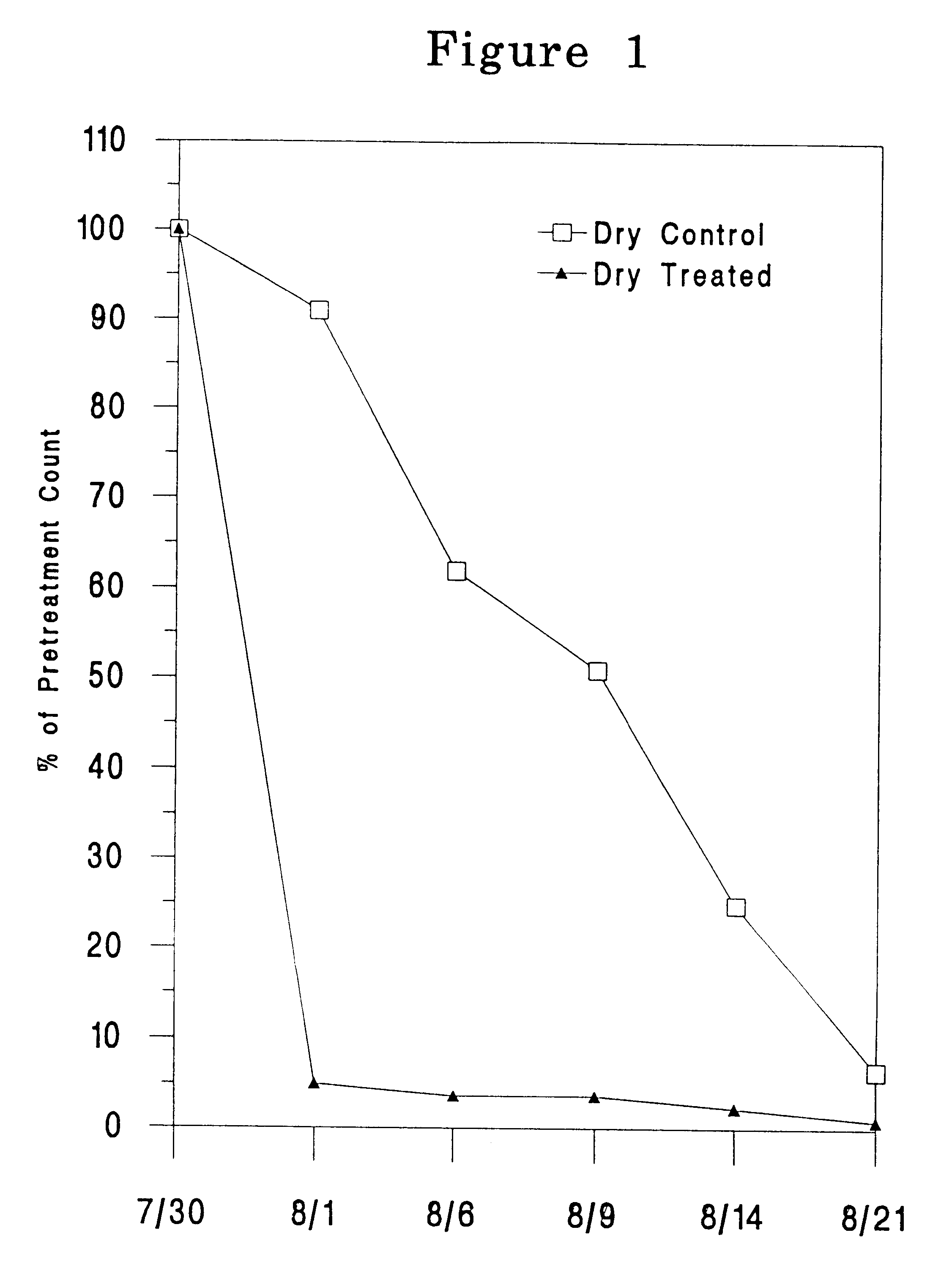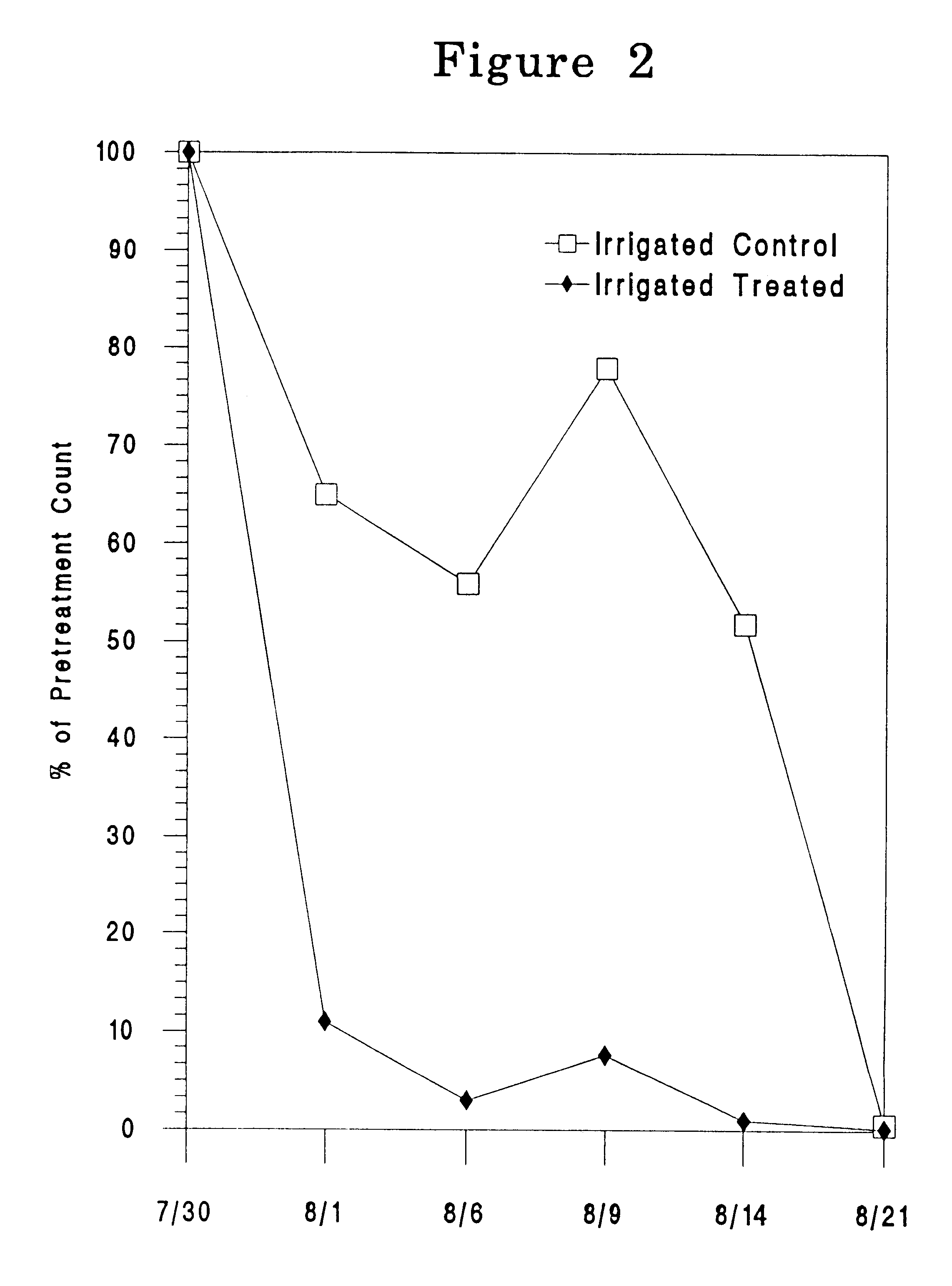Bait with cucurbitacin
a technology of cucurbitacin and cucurbitacin, which is applied in the direction of pest control, insecticides, pest attractants, etc., can solve the problems of reducing the yield of the affected plants, crop and garden damage, and continuing damage by the beetles
- Summary
- Abstract
- Description
- Claims
- Application Information
AI Technical Summary
Problems solved by technology
Method used
Image
Examples
examples 1-6
illustrate the increase in mortality rates with an increase in cucurbitacin content (Examples 1, 4, and 5) and the effect of differences in formulation on beetle acceptance.
As a comparative example, buffalo gourd root powder and carbaryl ground to a size of 10-20 .mu.m were suspended in corn oil and tested in parallel with examples 1-6. The mortality rate of the suspended particles was 98% (avg. dead was 14.7) after an exposure of 18 hours. The formulation was unstable, however, and separated into a thick paste of particles at the bottom of the corn oil. Such separation properties would dramatically increase the difficulties associated with shipping and storing a commercial product. Moreover, the corn oil suspension exhibited an efficacy period of only about 3 days even under dry conditions. The microspheres did not have the separation problems of the fine particles and exhibited an efficacy period of up to about 14 days under the same conditions.
example 7
Example 7 is a modified version of example 1. The bait of example 7 contained the materials listed in Table 2 and exhibited a particle size of 50-100 .mu.m.
The bait of example 7 was applied to test fields of corn in Nebraska. From each field, 48-96 plants were sampled. All fields had pretreatment counts of western corn rootworm beetles which were above the economic threshold for treatment. At the time of treating, 10% of the females were gravid, and the crop was in early milk stage.
The fields were treated by dispersing the bait in water and aerially broadcast in 40 foot swaths at a rate of 0.75 lb. microspheres per acre. This application rate translates into 0.1 lb. active carbaryl per acre. Striped plots were treated by interspersing a treated swath with an untreated swath. Therefore, the striped plots received half of the regular application rate, i.e., the striped plots received 0.375 lb / acre microspheres (0.05 lb / acre active carbaryl). Table 3 lists the conditions for each field...
example 8
In example 8, microspheres from example 1 were aerially applied at a rate corresponding to 0.75 lbs of microspheres (340 g) per acre to two fields (150 acres and 130 acres) exhibiting an infestation of northern corn rootworm. As above, the untreated control field was contiguous and used to monitor area beetle population changes. Table 7 reports the acreage-weighted average beetle count of the test fields and the control field.
As an examination of table 7 shows, the area beetle population increased by more than twice in the 4 days after treatment. Notwithstanding this increase, baits according to the present invention continued to provide good population control through this increased population period and for the succeeding two weeks.
PUM
 Login to View More
Login to View More Abstract
Description
Claims
Application Information
 Login to View More
Login to View More - R&D
- Intellectual Property
- Life Sciences
- Materials
- Tech Scout
- Unparalleled Data Quality
- Higher Quality Content
- 60% Fewer Hallucinations
Browse by: Latest US Patents, China's latest patents, Technical Efficacy Thesaurus, Application Domain, Technology Topic, Popular Technical Reports.
© 2025 PatSnap. All rights reserved.Legal|Privacy policy|Modern Slavery Act Transparency Statement|Sitemap|About US| Contact US: help@patsnap.com



